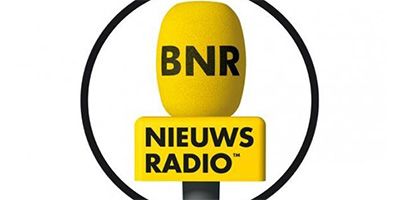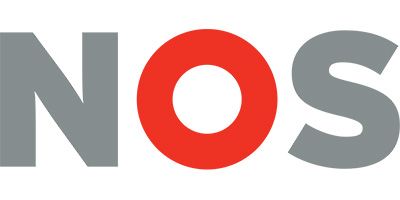
Neuromarketing is a hot topic. Of course, we know. In usability research, the brain scanner is used more and more often. In this way, the user experience is being measured. These insights can be used to increase conversion rates, and to improve ease of use.
However, many companies still have a lot of questions about neuromarketing. Should we use neuromarketing research? Isn’t that expensive? And what are the deliverables? Of course, these are questions anyone would have.
To answer these questions, we wrote a complete guide for neuromarketing usability research. Because we want you to know how we conduct this research, if there are reasons not to do it, and what kinds of insights you can expect.
Of course, I’ll end the guide with a few nice examples of these insights.
If you’re really interested in neuromarketing research, you’ll find an encore at the end of the guide: A complete example report of a usability brain research we conducted.
Let’s start with the most complicated subject: Should everyone use neuromarketing? Contrary to what you might expect from a neuromarketing agency, we definitely do not recommend every company to analyze the brain right away for their website or app. In this blog, you’ll find out when you should and should not use brain research.
Who should use Neuromarketing Usability?
Even though neuro usability has a huge advantage over standard marketing research, this isn’t the type of research we recommend to every company. There is a number of basic requirements you have to meet in order to really profit from neuromarketing.
The first thing you need: a specific research question.
Without a research question, there is no need to hook participants up on the EEG and to hope for some good insights. Make sure you know what you are looking for.
For example, do you want to discover where the bottleneck is in your order flow? Do you want to know if your website is confusing to its visitors? Or do you wonder which part of the customer journey induces desire?
Then brain data is extremely interesting to you.
In all fairness, neuromarketing usability research is not always the best solution. Remember: Neuromarketing research is a nice addition to traditional marketing research, but this does not mean it should replace traditional research. Specifically, neuro is better at measuring unconscious decision-making processes. The scientific consensus is that most choices are made unconsciously. Therefore, useful insights on these choices are often based on brain data.
However, don’t be mistaken.
A huge number of questions can be answered easier and cheaper by simply asking a customer. Do you want to know when traditional usability research is the best choice for your app or website? Keep on reading.
So, before starting a neuromarketing usability research: Is this the best option for your research question, kind of product, and context of choice? If the answer is yes, let’s go!
Start With Eye Tracking
Contact us now!
What does a typical Neuromarketing Usability study look like?
A typical study starts with the research question. What do you want to find out? For example, are you interested in the bottleneck of your usability flow? Or do you want to compare the experiences of customers between two flows? Or perhaps you have a specific question about the content, colors, or buttons or your website?
After determining this, we will disclose which methods are necessary to provide an answer to your research question. This research always uses eye-tracking.
When we don’t know where the participant is looking, brain data is worthless. How else can we know what the participant saw, when we observe a decrease in attention levels?
For some research questions, eye-tracking in itself is sufficient. However, nine out of ten times we connect eye-tracking data with EEG data to paint a complete picture of what participants observe and experience.
Other options, which are rarely used on their own, but can be used as add-on to the research are biometrics and emotion recognition. The former measures bodily reactions such as pupil dilation or skin conductance. The latter assesses the participant’s facial expression, which can be used to deduce their emotions.
Are the research questions and methods clear? Then the research can start. At Unravel Research, most of our research is conducted in our living room lab. In this lab, participants are located in a room that is as natural and home-like as possible.
With the EEG hooked op and the eye-tracker ready-to-go, participants are seated in front of the computer. They receive instructions, asking them to behave exactly as any other visitor of the website would do. For example, we might ask them to order a product, to subscribe themselves for a service, or to find out which education track they would want to follow.
This way, our research conveys highly realistic and usable results and insights.
Neuromarketing Usability Methods and Equipment
As you can read, there are several neuromarketing usability research methods available. Nonetheless, even if you have chosen the method which fits your research question best, you still need the right equipment.
At Unravel Research, the ABM B-Alert X10 EEG headset is used. And that’s not for nothing. This headset was recommended by several independent academic research, as it is the most suitable for research in a realistic field setting.
Not only is the ABM B-Alert X10 headset is of medical quality, it also has a huge number of advantages compared to other EEGs. This headset is mobile and flexible – for a participant, it is no different than a comfortable hat. Because of this, we can achieve a natural, realistic research setting.
Additionally, this headset is a ‘wet’ EEG. In other words, a conductance gel is used to ensure low impedances. This, in turn, leads to a very noise-free signal. As a bonus, the gel is soothing for both hair and skin, making the researcher and the participant even happier with the EEG headset.
Finally, the B-alert has nine electrodes. Using our software, the information we gather from these electrodes can be translated into four scientifically validated brain metrics. This scientific validation is something we care about very deeply at Unravel Research.
As mentioned, it is not for nothing that this headset is classified by independent researchers as the best mobile EEG-system in the world for the type of research we conduct.
Furthermore, we use the eye-tracking equipment by Tobii (the X3-120 and the Tobii Glasses 2), to determine where the participant is looking, a stunning 120 times per second. This technique gives us ultra-accurate measurements of eye movements, pupil dilation, and distance to the screen.
What are the costs of neuromarketing usability research?
We won’t lie: Neuromarketing usability research can be quite costly. Think about how you want to use the research, to acquire the most out of it.
A big advantage, however: people are more similar in their brain data than in their verbal responses. This means that only a relatively small number of participants is needed to discover precious insights. The most usability studies are carried out with six to ten participants per target group segment.
Naturally, each neuromarketing research comes with its own price tag, dependent on the number of participants and the complexity of the analysis. Neuromarketing research is not only used for usability research, but also for advertisements or physical retail environments. For an extensive, complex in-store research using the EEG, eye-tracking and a large number of participants are studies of €25.000 not unusual. However, smaller studies like an online usability research can be realized for €5.000. This is similar to the costs of a traditional usability research.
Two Neuromarketing Usability Cases
Usability research is conducted for a clear reason: To discover insights that you can use to raise your conversion rate and to optimize the user experience.
With a standard neuromarketing usability research, we are able to identify ten to fifteen findings. Findings that each have the ability to increase the conversion ratio or customer satisfaction.
What we then do with these findings is how Unravel Research is distinguished from other neuromarketing agencies.
We don’t stop after the analysis (“this page is too overwhelming”). We provide each finding with some specific, hands-on optimization tips (“limit the number of bullet point to three”). This is clarified with mock-ups of a possible change. The marketing psychologists in our team possess extensive knowledge on behavior, enabling Unravel Research to use evidence-based insights to help our clients make their interfaces more pleasant and increase their conversion rates.
Are you curious to find out what kind of insights we have found over the years? Some examples.
1. The Test Effect
This effect we found in one of our studies is called the Test Effect. Do you remember the red pen your high school teacher used on your tests? This still flourishes in the digital era, especially when you fill something out incorrectly in an online form.
We discovered something extraordinary. When conducting research for a client, we noticed that a fairly strong negative reaction occurred in the participants brains when seeing a red error notification.
An example of such an error notification.

This is not strange in itself. Getting an error notification is never fun. However, why was this (negative) reaction so strong? We don’t call it the test effect for nothing.
In the past, when you received your test back with a big, fat, red cross, you knew something was wrong. The color red is associated with an error and, above all, with something you cannot correct anymore.
We advised our client to use the color orange for the error notification, to check whether it would affect their conversion rate. The result: An increase in conversion of 15%, with a 99% confidence interval.
2. Discount Pain
A second effect we discovered in the brain data was the following. At the check-out of a webshop, we noticed that the word “discount coupon” elicited a negative reaction in the brain.
That’s weird, discount is something we all want, right?
Even though this is correct, not every had a discount coupon. Those who didn’t get a discount yet were confronted with the fact that others could get the same product for less felt disadvantaged.
We advised our client to test these two options:
- Make the coupon field less obvious, by making the field not directly viewable.
- Use a different word: Action coupon instead of discount coupon. Again, this is based on an
association. Everyone should receive a discount, but it is possible that not every customers
partakes in an action.
The results? A 14% increase in conversion with a confidence interval of 95%.
These effects exemplify how small changes can bring about big results. In our opinion, this is what makes neuromarketing research great: Without brain data, you would never find these bottlenecks in the conversion funnel.
People don’t do what they say, and they don’t say what they do.


 EN
EN  NL
NL 




